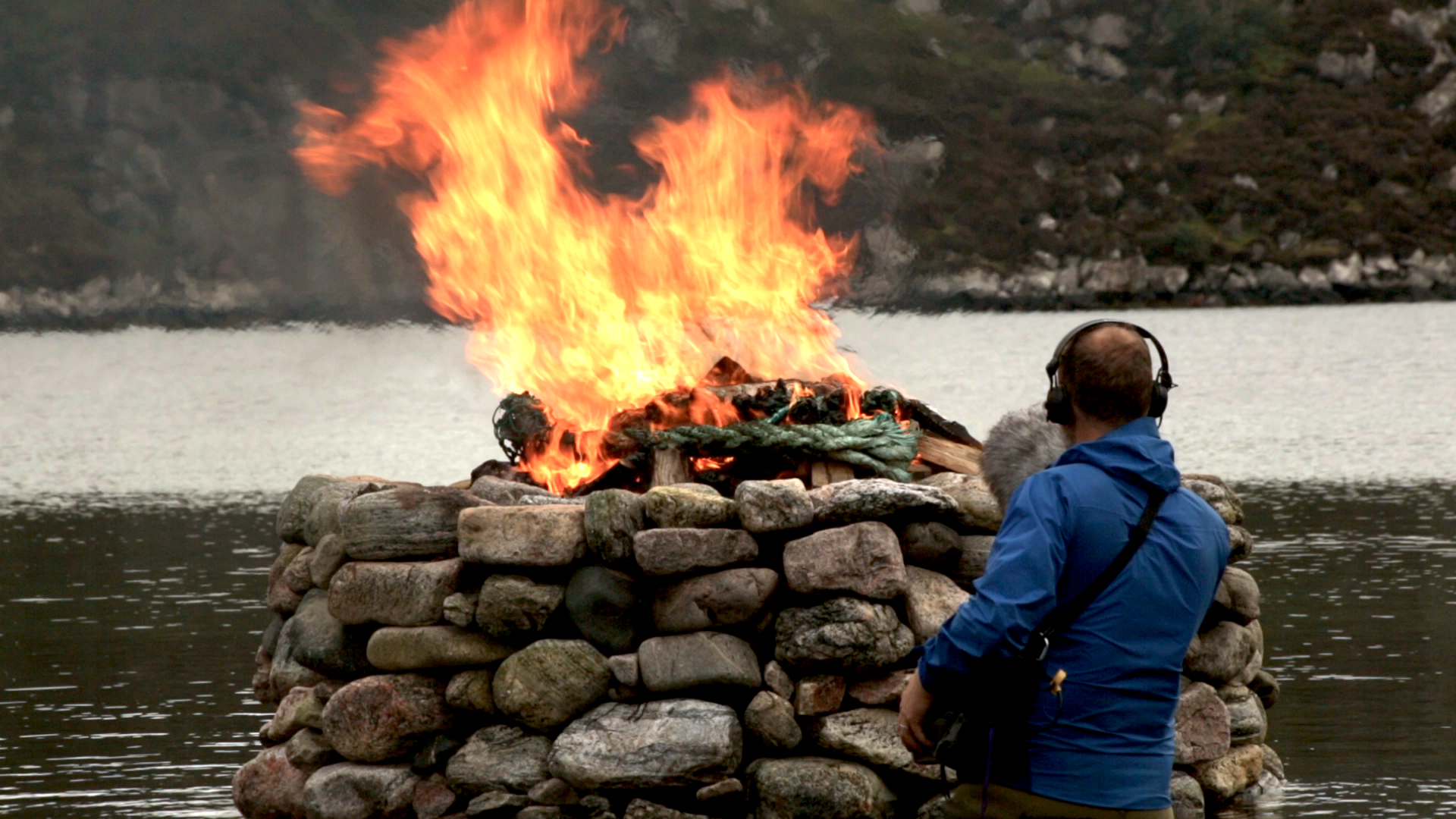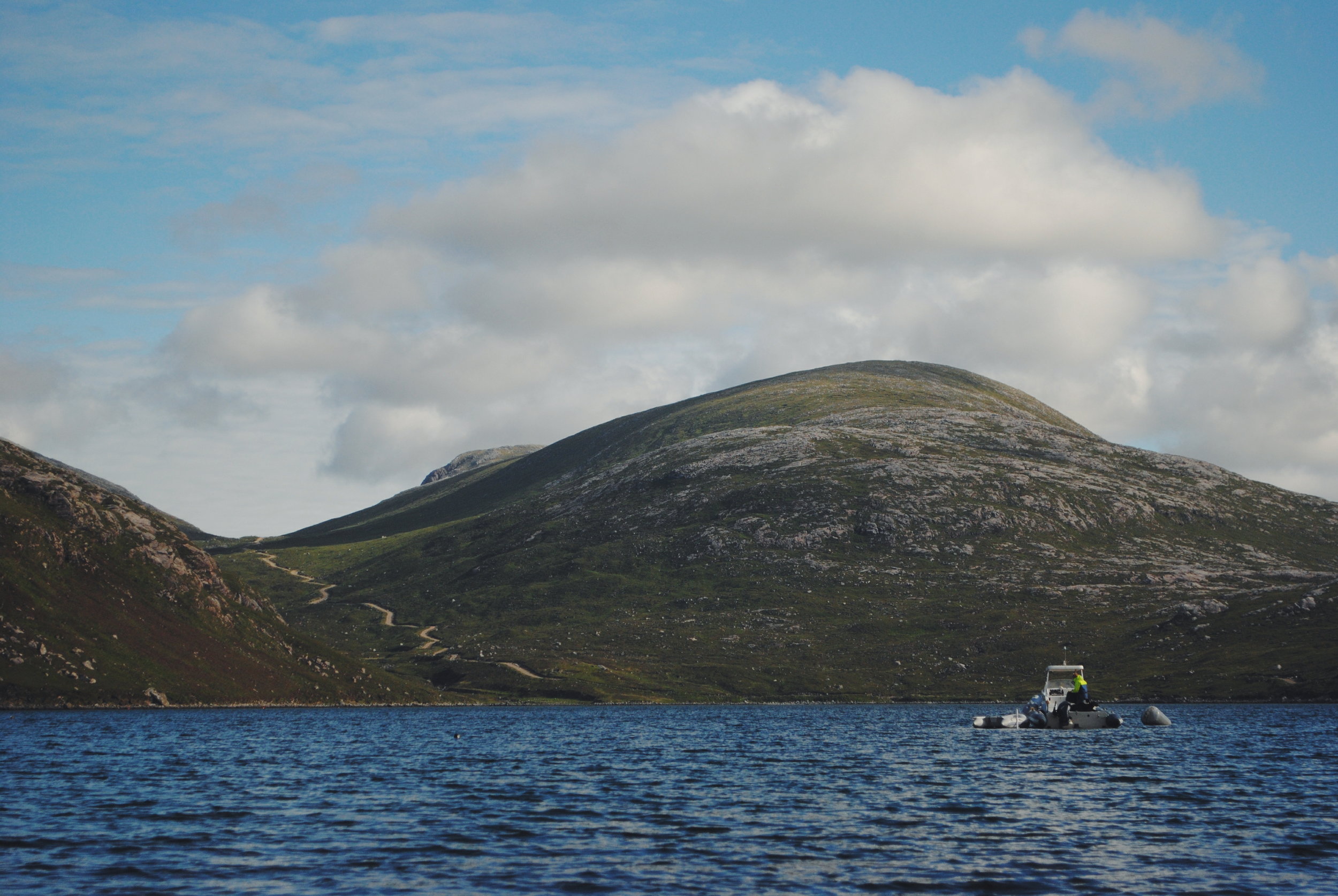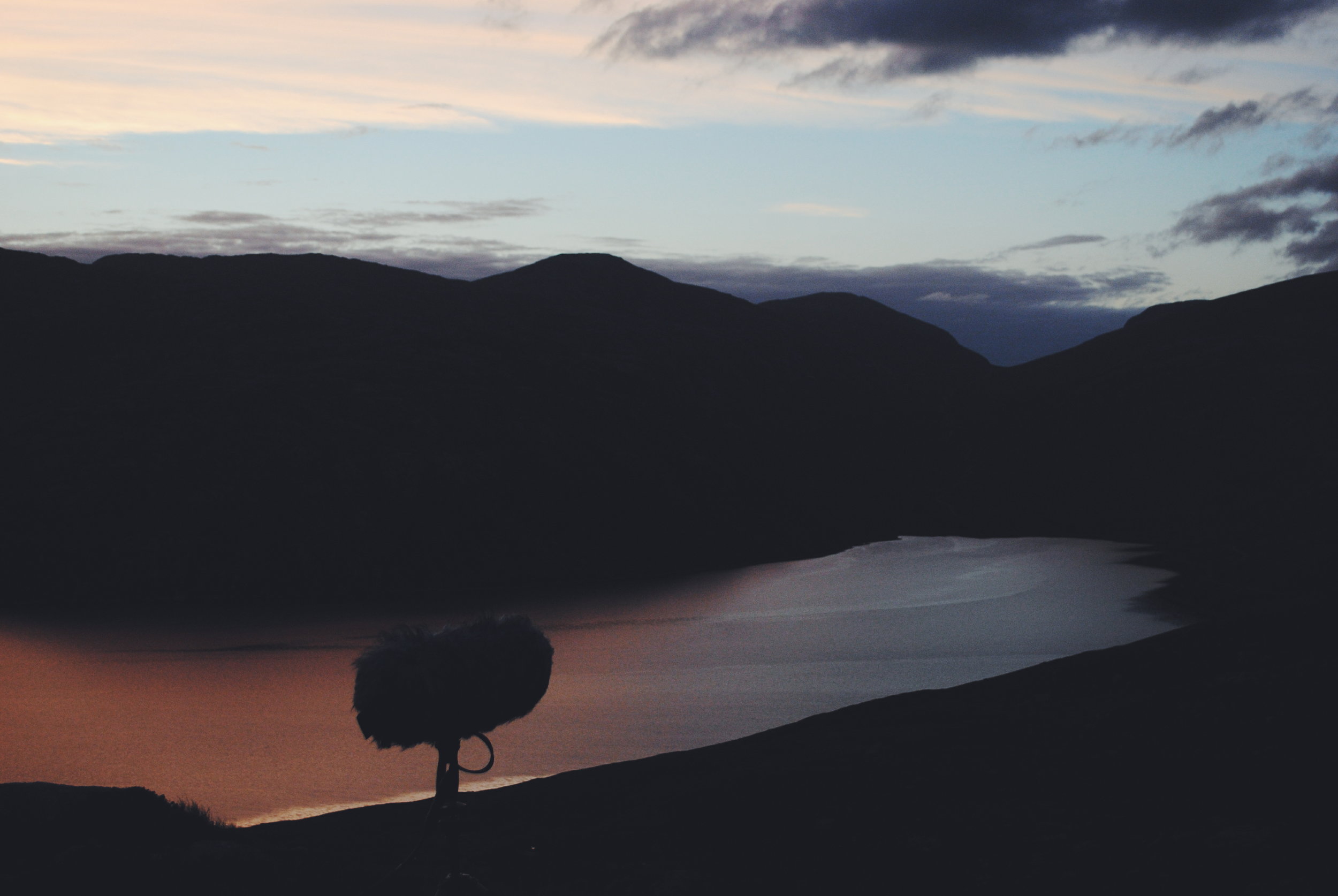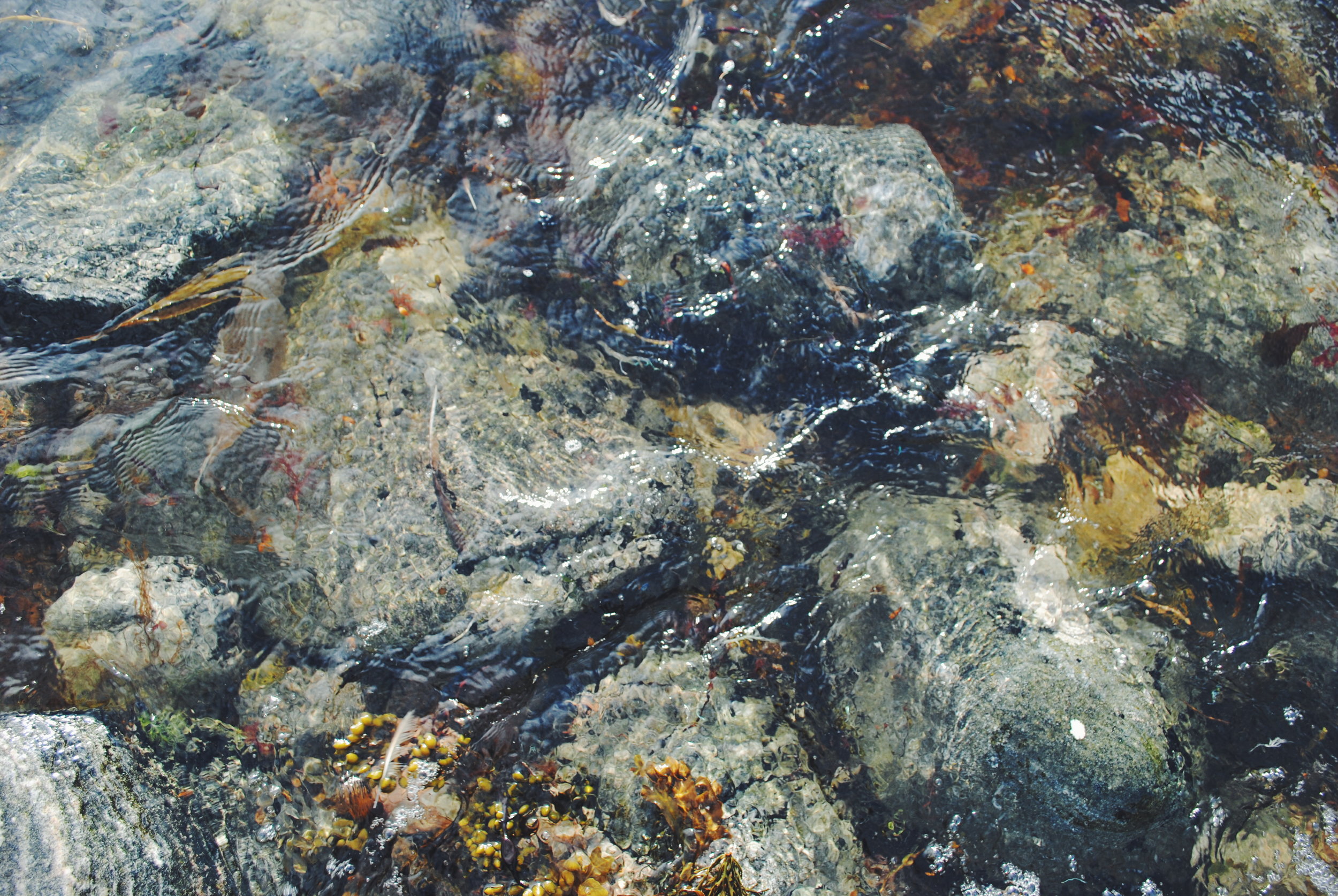Recording a close perspective on one of Julie Brook's Firestacks. (© 2017 Julie Brook)
Its been a year since our first trip to the Outer Hebrides in the Winter of 2017, where we recorded the sounds of Julie Brook's fascinating Firestacks. Six months later in the Summer of 2017, we were lucky enough to revisit this stunning corner of the world, on a follow-up assignment; this is a brief account of the experience.
Waiting for a boat ride to complete the last leg of travels to reach the work location.
The main focus of these field recording trips is to document the life-cycle of the Firestack; from building, to firing, to extinction, as well as its environment. An important perspective that Julie has always been keen on capturing is the underwater one - what does it sound like under the surface when the tidal waves engulf the Firestacks?
On the first trip we had the privilege to work with a pair of Ambient ASF-1 Hydrophones, which we absolutely loved. The second time round we used a H27S Stereo Hydophone from Monkey Sound - an artisan contact mics manufacturer based in Spain - as well as our old faithful JrF D-Series Hydrophones. The H27S caught our attention because it comes in one casing. Given the rough seas we faced the first time round, it seemed like a practical feature in terms of retrieving the mic planted in the Firestack after the tide has covered it (Firestacks are around 1.5 meters tall at their highest point). These clips give you an idea of the colour and stereo field of this neat, relatively new, hydro-mic on the market.
You can download longer versions of these recordings here (free to use under the Sound Ark License Agreement).
Here's a few more sights and sounds we recorded - hope you enjoy them on your device as much as we enjoyed them in the field.
These are cold long days in a remote bay on the Western-most part of Lewis, and that's what makes it so special. There is practically no shelter, the nature is bare and the exposure to the elements constant. There is virtually no noise pollution, very little chatting between the crew and so the day becomes mostly a long introspective moment. It's a positive experience - you are immersed in the surroundings, constantly active, albeit completely still a lot of the time. The hours fly and before you know it (plus a 40-minute hike) you are back at the bothy, lighting the fire and regaining your extrovert self with the help of a dram of Scotch whisky.
Without a doubt one of the most inspiring assignments we have had the pleasure to work on so far, looking forward to round 3!
What's the most inspirational recording or filming location you have worked in? We'd love to hear your stories, especially if the location was free from noise pollution or on the contrary extremely noisy - you can leave us a comment below.

































